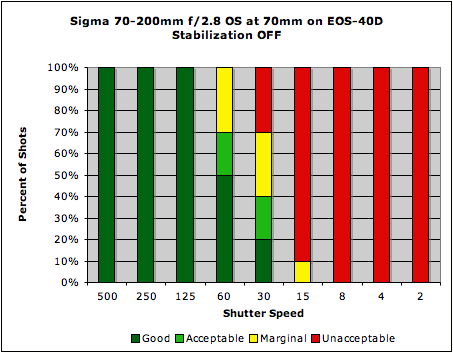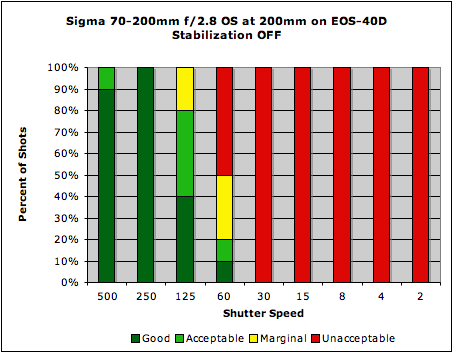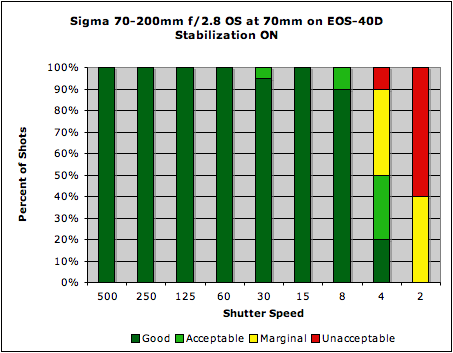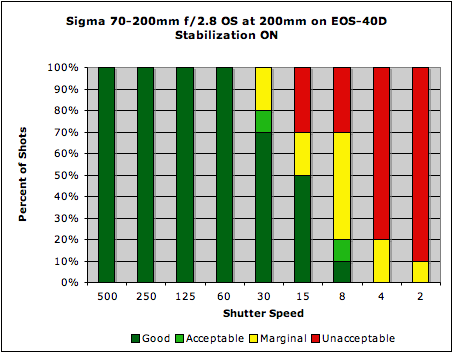Most people tend to think of image stabilization as being mainly for telephoto lenses. While it's true that their longer focal lengths tend to magnify the effects of camera shake, image stabilization can provde a very useful assist at wider angle focal lengths as well; anyone who's ever tried to blur the image of a waterfall, while keeping the surrounding landsape tack-sharp knows exactly what I'm talking about.
From a practical usage standpoint, the Sigma 70-200mm f/2.8 EX DG OS HSM APO seems to take longer for the lens to get its stabilization operating; you want to be half-pressing the shutter button for a second or two before you actually take the shot. As well, the display in the viewfinder isn't as steady as it was with other manufacturers; the subject is more prone to wandering, as the lens wanders and the IS compensates, so it can be a bit more difficult to achieve precise framing with it. But once it's running, the IS does a pretty decent job, and an exceptional one at 70mm, where in our tests it produced a solid four stops of stabilization.
 |
| Mouse over this chart to show results with IS activated. |
At 200mm, the lens produced results of between 2 and 2.5 stops of stabilization; not too bad, but not as good as other manufacturers at this focal length.
 |
| Mouse over this chart to show results with IS activated. |
Image Stabilization systems tend to provide more benefit to less-stable shooters than very steady ones, so most users will see the same or greater amounts of shake reduction than we measured here. You can read more about our IS test methodology here: SLRgear IS Test Methodology, v2.

